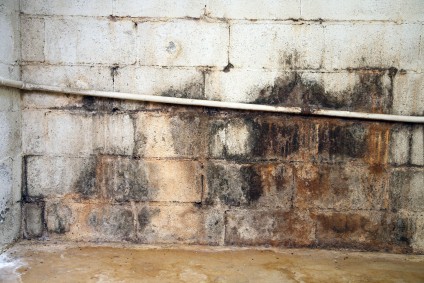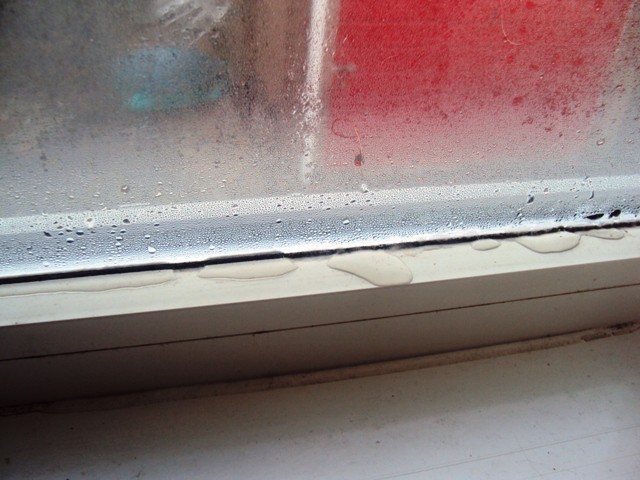Are the walls inside your house damp or wet? Damp inside walls are a really bad sign something is wrong with your house and requires your attention.
If your home has a wet patch on an inside wall, it will normally be easy to spot and in fact depending on how bad it is, it may actually be wet to touch, literally.
The signs of damp ingress in the home explained
Wallpaper can start to peel, paint and internal plasterwork can crumble into a fine powder and/or the paint on the wall will start to bubble in places if your house has wet walls.
Sometimes a leaking pipe internally, can cause the issue, which of course requires in most cases, the services of a plumber.
However the most common cause of damp and wet walls inside the house is poor maintenance to the exterior; the part of the house that needs the most protection.
NOTE: If the damp is not cured, MOULD will start to appear, which will spread and get worse.
As it spreads it releases SPORES into the air.
You can’t see them, but you would not be able to avoid breathing them in, and they are worse for you than smoking.
Internal damp needs to be cured externally.
Time and time again our surveyors go to see a damp house and find that a well-meaning builder had been in previously and charged the couple a lot of money to “cure the damp” , but only tackling the issue from the inside by using a stain blocker, drywall or some other internal wall covering.
It wont work, it will just move the damp to another part of the wall and re-appear.

It is IMPOSSIBLE to cure penetrating or rising damp internally.
Yes, that “anti damp paint” you bought is snake oil and a total waste of time and money.
If you “block” or “seal” a part of a wall that damp is coming in, remember we are talking about WATER and its passage into the building, so if you block its escape, water FLOWS and will therefore simply find ANOTHER spot on the wall to come through.
Meaning that after spending a tenner on the issue, you will be back to square one and you may have well spent the money on a couple of beers instead!
It’s a false economy, don’t waste your money.
You cannot cure damp from the inside, even though the damp is ON the inside wall, it has come from OUTSIDE and that is where you need to look to cure the damp.
Damage caused by damp
Whilst this is happening, the damp in the walls will start to freeze during colder weather, and as you know from the ice tray in the freezer, water EXPANDS when it freezes and therefore just imagine the DAMAGE that is doing to your home, unseen, but deadly.
We’re not saying this to try and frighten you into buying our services (!), we are telling you the TRUTH!
This is what happens and this whole article, in fact the entire website, is written by a surveyor, university qualified (Plymouth 1998 2:ii, with honours), with professional experience since the late 1980’s.
If the exterior walls are in bad condition (visually you can check yourself to see if any cracks are evident, for example), and if they are in bad condition or if you just have a coat of masonry paint (coloured water) then your walls are letting penetrating damp into the house, causing the interior walls to be wet.
Unblock those air vents!
Another issue that affects homes that have damp is the lack of air circulation inside the house.
Older properties were normally built with wooden sash or casement windows which were never really air tight, but allowed for a certain amount of natural ventilation which the house needs.
Also if you have double glazing, make sure they have “trickle vents” installed.
Air vents also (you can see them outside, near the ground), need to be unblocked if they are blocked by mud, cement etc as this is essential in allowing the cavity and other parts of the home to breathe.
Don’t seal up or cover airbricks.

If you seal air bricks up, the wall will will not allow air to freely flow around and under the house, causing render to crack and fall off and also rotten floorboards inside.
Airbricks are only evident on some houses and can always be found near the base of a wall.
You also should NOT spend your money on gimmicky condensation elimination kits, often costing upwards of a fiver. Why? Because they are just a pot of SALT!
If your room feels like the air is damp, fill a large bowl with household salt and the next day it will be hard as it has absorbed the water droplets from the air! Much cheaper than buying a kit from a DIY shop also.
So what is the solution to curing internal damp?
There are many ways to cure damp and we would recommend a mixture of getting work done by a reliable damp proofing company, and also things that you can do yourself, a sort of mix ‘n match approach can work wonders.
An exterior wall coating from never Paint Again UK encompasses a lot of damp proofing work, so that could be one of your options, plus of course it is going to make the house look nice from the exterior too.
An Exterior wall coating, in any colour you like, will STOP DAMP, will not crack, peel, flake or fade, comes with a full repair programme and guaranteed for 20 years (at least) of a damp free and maintenance free house!
In fact, we can provide you with a complete exterior makeover, which also cures damp walls, at a fraction of the cost of our nearest competitors.
Things you can do to help stop damp in your home.
You can buy or hire a dehumidifier which will help to extract the moisture from the air, and aid the drying out process.
Of course bear in mind, this is a sticking plaster approach and will NOT cure damp.
There is actually a range of money saving products that cure wet interior walls, and all instances of penetrating damp, and they are “Never Paint Again” Exterior protective wall coatings, a service available from THIS website.

